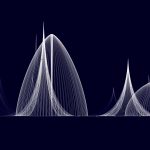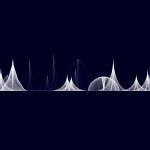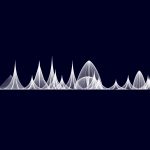“Study for a cosmic city” is inspired by a utopian urban proposal exposed by the composer and architect Iannis Xenakis in an essay entitled “La Ville Cosmique” (1965). The structures characterizing the utopian city are designed using superquadratic curves which can describe reasonable variations of amplitude and pitch. Parameter values extracted from buildings and paths are used to process sound materials from unidentified radio transmissions actually received worldwide. In the graphic representation, each building transmits a specific radio signal whose quality depends on the cursor’s position. Paths on the ground, instead, define the meso- and macro-formal articulation of the audiovisual work.
ADAF ONLINE 2025 | 21 YRS ADAF | SIMULACRA
Athens Digital Arts Festival (ADAF) is an International Festival which celebrates digital culture through an annual gathering bringing together a global community of artists and audiences.
ADAF 2025 | SIMULACRA | 21st EDITION




